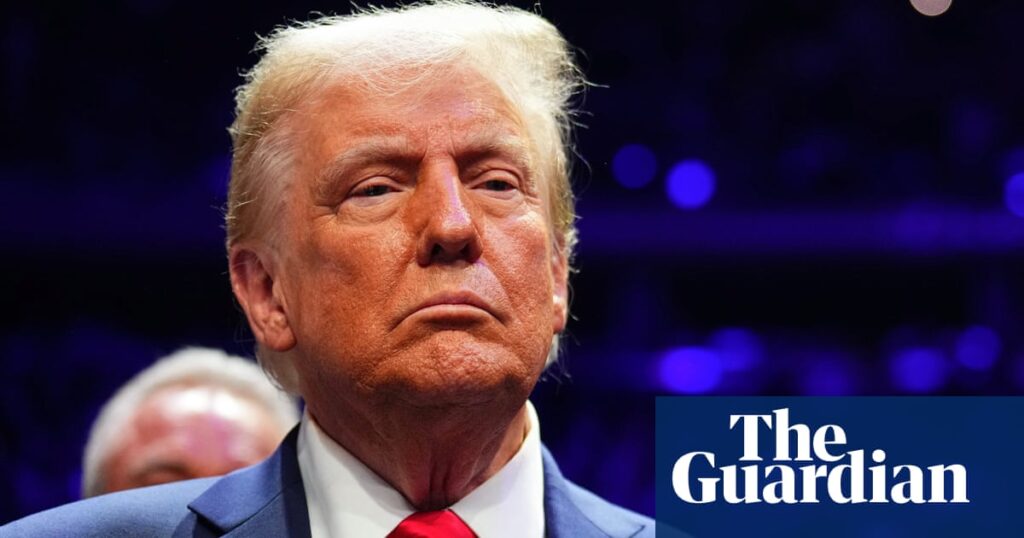President Donald Trump said Monday that his administration would declare a national emergency and mobilize the U.S. military to carry out mass deportations of illegal immigrants.
President Trump responded in an early morning social media post: “It’s true!!!” In response to a post by Tom Fitton, president of the conservative group Judicial Watch, on November 8, he said the incoming administration would “use military assets to reverse Biden’s invasion through a mass deportation program.” I wrote it.
Since his decisive victory, Trump has said he intends to follow through on his campaign promise to carry out mass deportations on his first day in office. But many aspects of what he described as “the largest deportation program in American history” remain unclear.
Trump has previously indicated he would rely on wartime powers, the military and sympathetic state and local leaders. Such a large-scale campaign, and the use of military personnel to carry it out, is almost certain to invite legal challenges and pushback from Democratic leadership, some of whom have already weighed in on Trump’s deportation plan. has announced that it will refuse to cooperate.
Through his personnel announcements, the president-elect has assembled a team of supporters and hardliners to carry out a crackdown on immigration during his second term.
Tom Homan, who served as acting director of Immigration and Customs Enforcement in the first administration, has been named “border czar,” with broad powers. In a short social media post announcing his position, President Trump said Homan “will be responsible for all deportations of illegal aliens to their countries of origin.”
Also returning for a second term is Stephen Miller, a leading advocate of the previous administration’s most controversial immigration policies, including the use of family separation as a deterrent measure. Miller was appointed White House deputy chief of staff for policy and homeland security adviser, giving him far-reaching influence over immigration policy.
Rounding out his team, he nominated South Dakota Gov. Kristi Noem, a loyalist with a long track record as an immigration hardliner, to be the next secretary of the Department of Homeland Security.
Experts and advocates say the massive deportation campaign outlined by President Trump would pose legal and logistical problems, not to mention millions of people, many of whom have been in the country for at least a decade. Not to mention the soaring costs and infrastructure required to track down and deport people (people living in other countries). , contribute to the workforce, and share households with U.S. citizen families.
Mr. Trump and Mr. Miller described a plan to federalize the National Guard for immigration enforcement, including sending troops from friendly Republican states to neighboring states whose governors refuse to participate. . Miller also advocates building large-scale containment “camps” or tents.
In his first post-election interview, President Trump told NBC News that he had “no choice” but to pursue a mass deportation plan regardless of the cost.
“It’s not about price,” he says. “That’s not true. In fact, we have no choice. When people go on a killing spree, when drug lords destroy countries, and now they don’t want to stay in those countries because they won’t stay here. When you’re about to go back. There’s no price tag.”
The American Immigration Council estimates that deporting one million people a year would cost more than $960 billion over 10 years.
President Trump has claimed on various occasions that he would deport at least 15 million people and as many as 20 million people who are in the United States illegally, but these numbers have not been verified.
sign up for The Stakes — Presidential Transition
Introducing the aftermath of the US election and the transition to President Trump
Privacy Notice: Newsletters may include information about charities, online advertising, and content sponsored by external parties. Please see our Privacy Policy for more information. We use Google reCaptcha to protect our website and are subject to the Google Privacy Policy and Terms of Service.
After newsletter promotion
According to a Pew Research analysis, there will be an estimated 11 million people living in the United States without authorization by 2022. Migration to the U.S. border reached record levels in 2022 and 2023, but declined dramatically in 2024 due to increased enforcement by Mexico and the Biden administration’s asylum crackdown.
It is unclear who the Trump administration will target for deportation. His campaign rhetoric often failed to distinguish between immigrants with legal status and those in the country illegally. And President Trump said throughout his campaign that violent crime has declined across the country, and despite research showing that immigrants have lower crime rates than Americans, more and more immigrants have crossed the southern border in recent years. He claimed that it was increasing crime.
During the campaign, the Trump campaign repeatedly refused to rule out the possibility of deporting Dreamers, young people brought to the U.S. as children, hundreds of thousands of whom are classified as “childhood arrivals.” They are permitted to live and work in the United States under an Obama administration-era program known as “Deferred Action for Foreigners.” (Daka).
Questions remain about how the raids will be carried out and where people will be detained. Civil rights groups have already expressed concern that people with legal status, and even U.S. citizens, could be caught in the vast dragnet.
Meanwhile, Trump’s supporters are pushing back against his claims that he came into office with a mandate to carry out large-scale attacks. They point to data that finds most people do not support mass deportations, especially when respondents are informed about the potential impact on the economy, workforce, and American families. .
“The word strategy is clear: to incite fear, panic, and chaos in our communities, because bullies thrive on this,” said United, a network of Dreamers advocacy groups. – Greisa Martinez Rosas, executive director of We Dream Action. He spoke at a post-election briefing. He added: “Trump may be re-elected, but he does not have the authority to intervene and tear our communities apart.”



